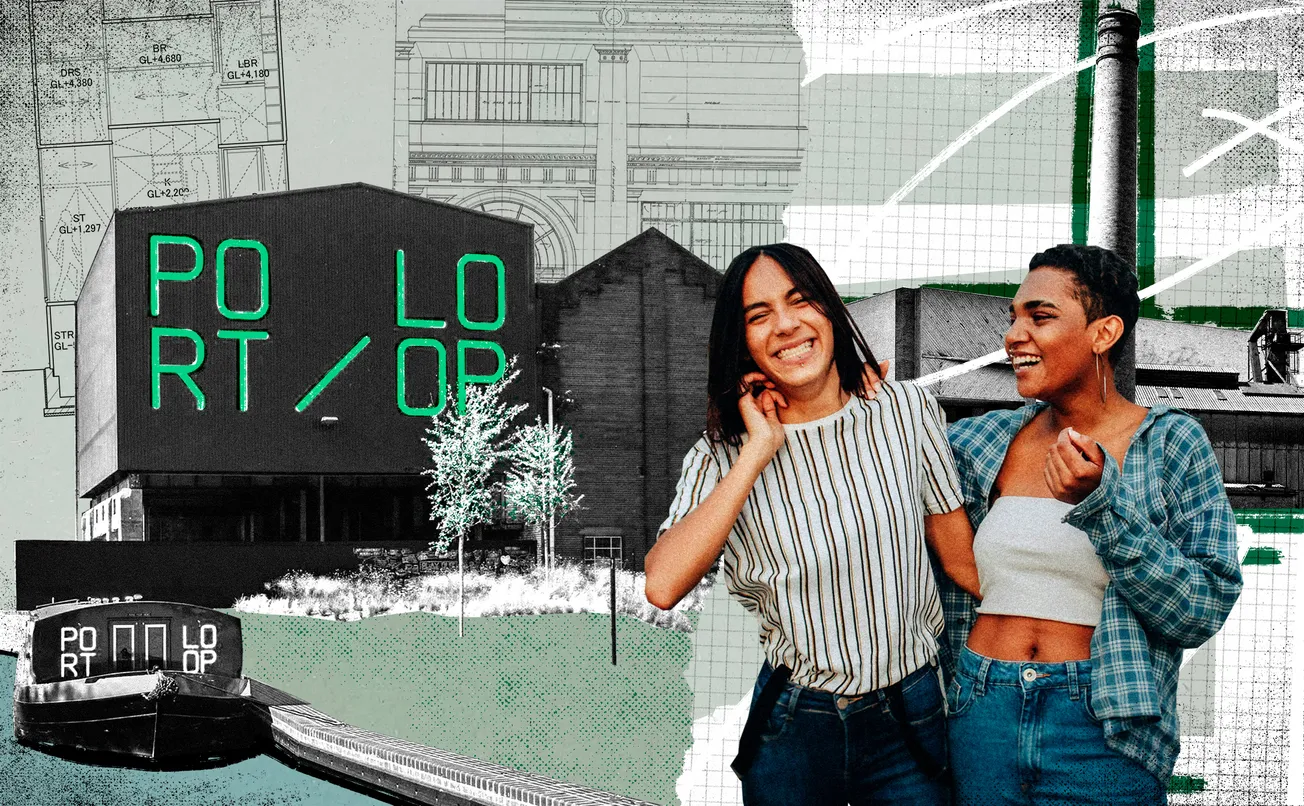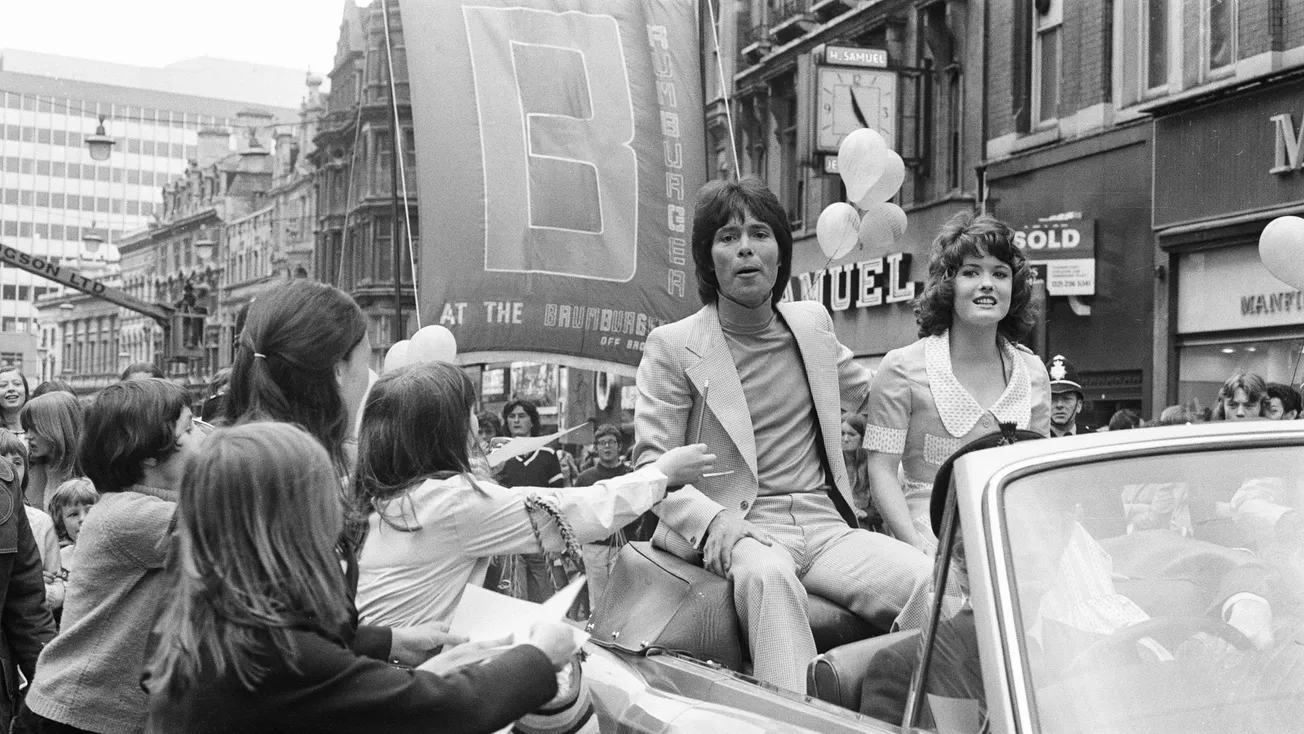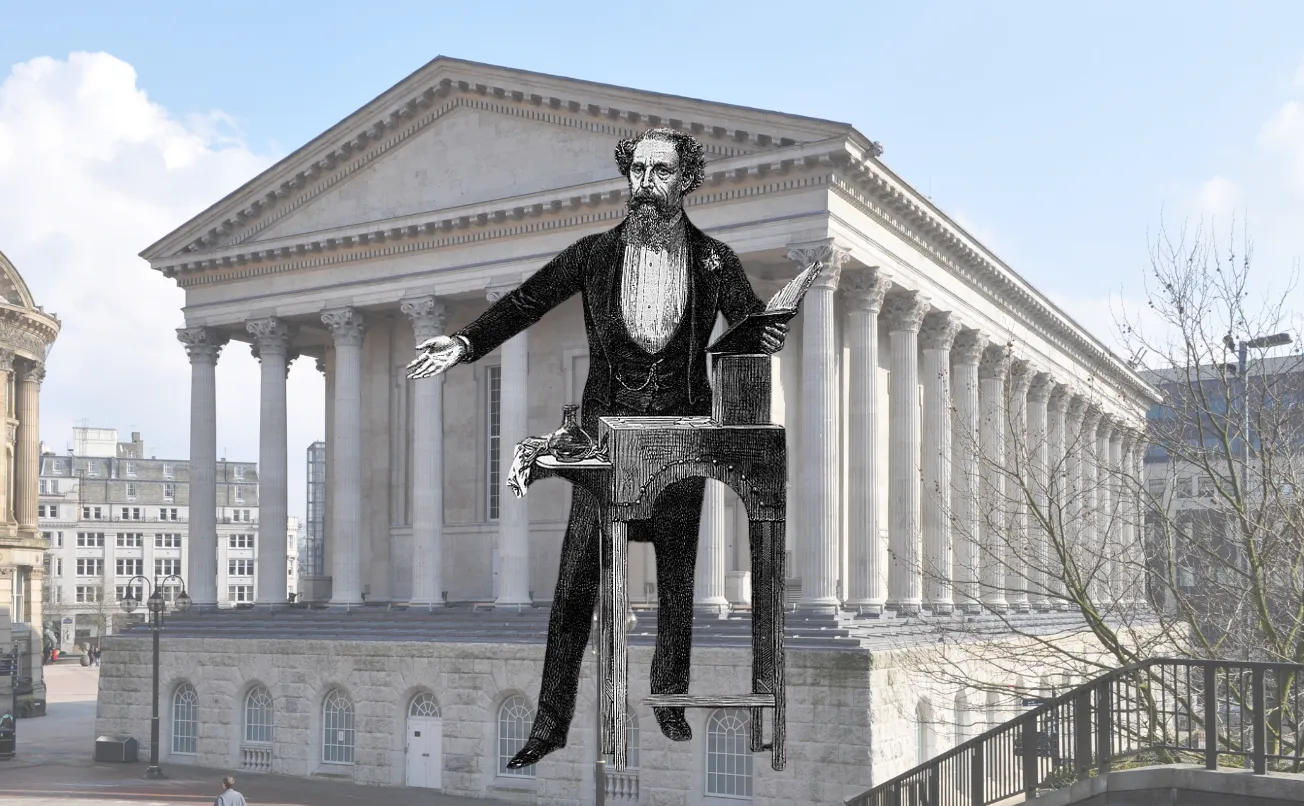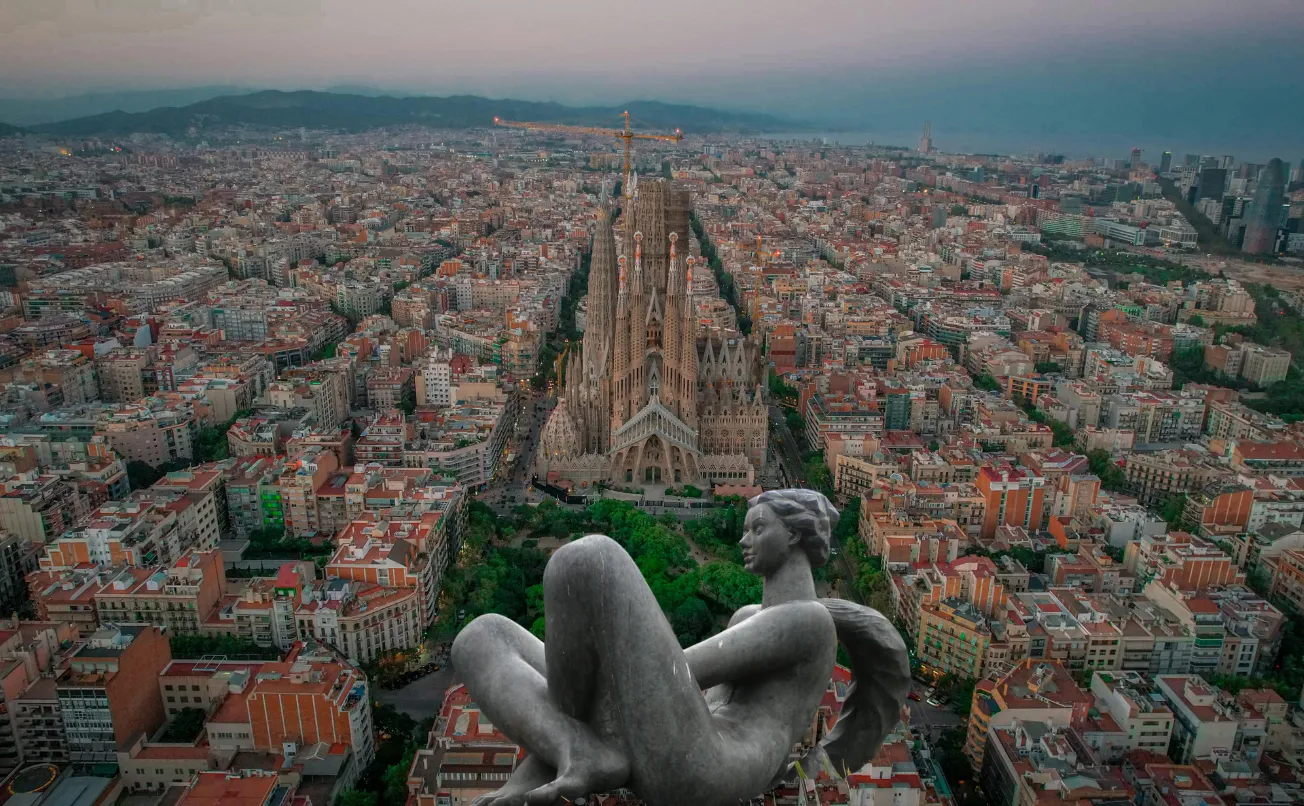Up at Edgbaston Reservoir, 81-year-old Tony Hutchinson is staring out, not at the vast, still expanse of water, but down the hill over the industrial ruins of Ladywood, and the sprouting roofs of a new modular block of flats. Tony began work in Ladywood in 1958 as an apprentice toolmaker, and recalls a noisy, busy world of factories dedicated to metalworking, of a cinema catering for the thousands of workers, and the trams that once stopped here. He remembers the “young ladies who used to work at Bulpitt’s on the assembly lines, making kettles and irons”. He points towards where the city hospital once stood. “And all there is now is apartments, blocks of flats,” he says, wonderingly. “I could cry when I think about it.” In living memory, the fortunes of this place changed utterly.
“It’s gone!” he says.
Among industrial dereliction on the fringes of Ladywood, a curious modern outcrop has risen. Projecting over the towpath are the black balconies of Port Loop, its gleaming white façade and spiky roof making quite an impression beside the crumbling brickwork of the once busy factories Tony recalled. Along Birmingham Canal there’s no mistaking when you’ve reached the new settlement. Beyond an inlet — part of the original loop that allowed barges carrying coal for the factories here — stands this handsome, aspirational “island community”. And this block is Mansion House, the latest piece of the loop to be tied up, a show flat enticing potential buyers inside.

There’s a beguiling quality to Port Loop, a kind of pristine, architects’ drawing freshness to it all. It’s hard to believe that the first residents moved in five years ago, into the first modular houses (sometimes unfairly called ‘flatpack homes’) built by developer Urban Splash and social enterprise Places for People. Orange signs display street names on their sides, just in case you hadn’t got the message that they do things differently here. Some of the new homes hold an echo of Victorian workers’ terraces, with their flat brick fronts and tall windows. Others feel unmistakably from the digital age, like they were 3D printed in place. Down the road there’s Ladywood Leisure Centre, with its gym and pool, and YARD, a creative space for local folk, inhabiting one of the townhouses. It’s not your everyday estate.
John Munro and his family moved here in 2021, partly because they’d been drawn in by the work of community organisation Civic Square, now synonymous with Port Loop. He cites them as a reason the community has gelled here. “It's also helpful that we do have a bit of public green space with a little park,” adds John. Here people walk their dogs, and kids play. “You stop and chat for a minute, or on a Saturday evening, have a beer outside. It feels like a community.” They’ve also made links with some of the new developments on the other side of the canal, in the sturdy blocks of Soho Loop. “There's a little grocery shop over there,” he says. “It does change the feeling of isolation in Port Loop.”
Birmingham deserves great journalism. You can help make it happen.
You're halfway there, the rest of the story is behind this paywall. Join the Dispatch for full access to local news that matters, just £8/month.
SubscribeAlready have an account? Sign In







